16Western red cedar
Thuja plicata
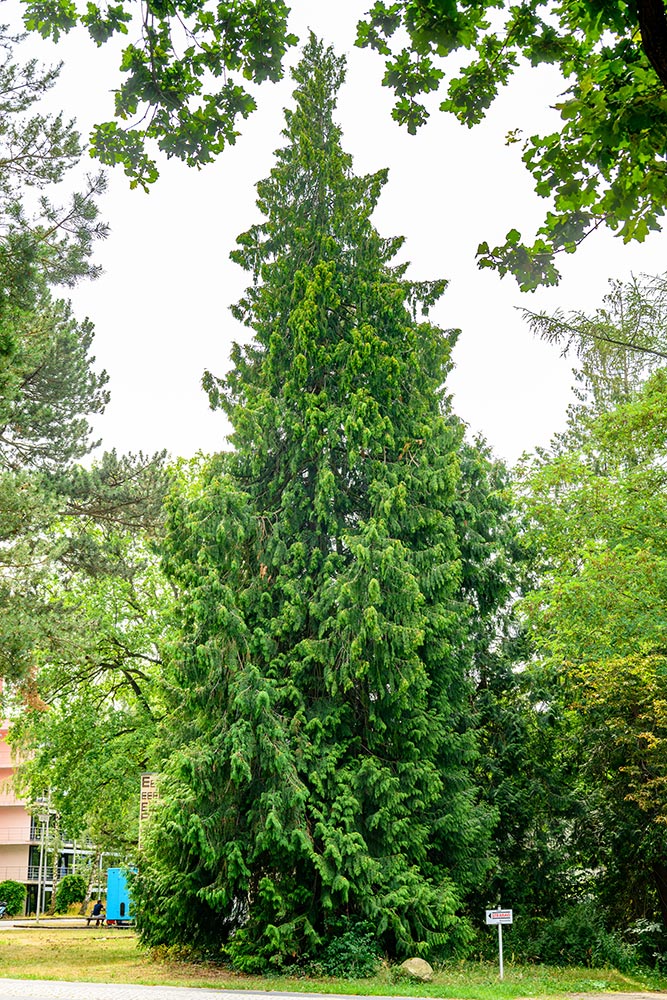
Tree number 16 is a Western or Pacific red cedar, botanical name Thuja plicata, of the cypress family or Cupressaceae. The generic name Thuja is derived from the Greek thyo (to sacrifice), since the pleasant-smelling wood was burned in sacrifices. This is also the origin of the German name "Lebensbaum" (tree of life).
Western red cedar are evergreen plants that reach heights of up to 50 meters and trunk diameters of up to six meters in North America. The tree crown is narrowly conical; in old trees it widens. The broadly furrowed bark is dark reddish brown at first, grays with age and peels off in plates.
The scale-like leaves are pressed against the branches. They are aromatic and their smell becomes more intense when rubbed. The scale-like leaves are shiny fresh green above, lighter below.
The western red cedar is monoecious, so male and female cones are on one plant. The male cones are very small and are terminal on branch tips; they are pale yellow and strobilate in March. The female cones form on stouter twigs and are ovoid, about one centimeter in size. They are yellow in summer and turn brown in late fall.
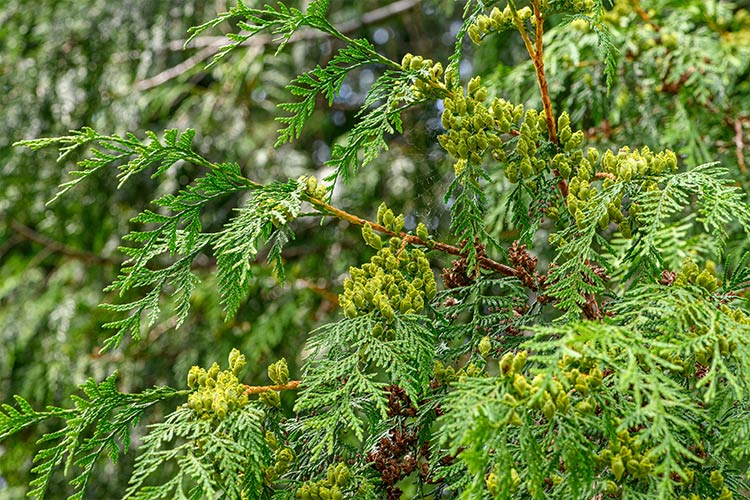
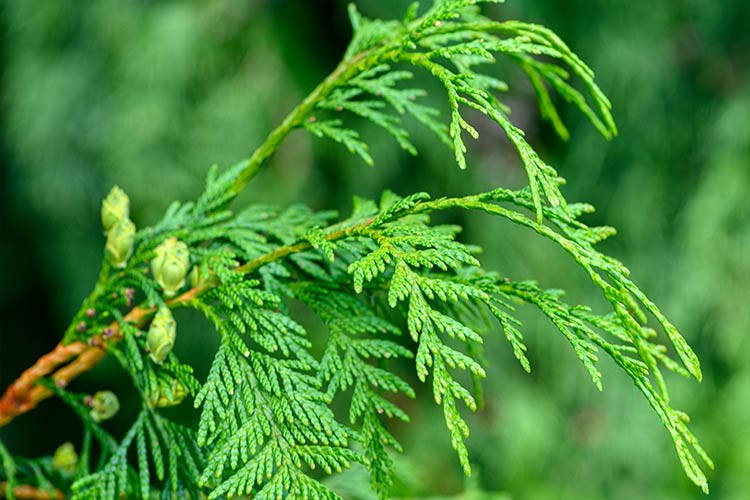
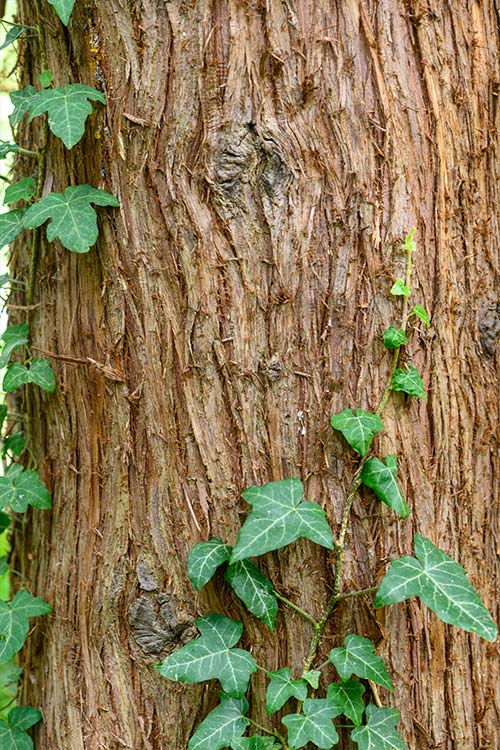
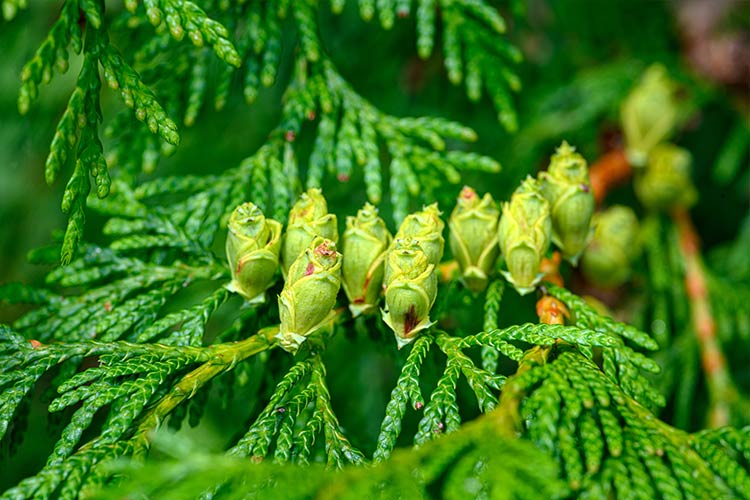
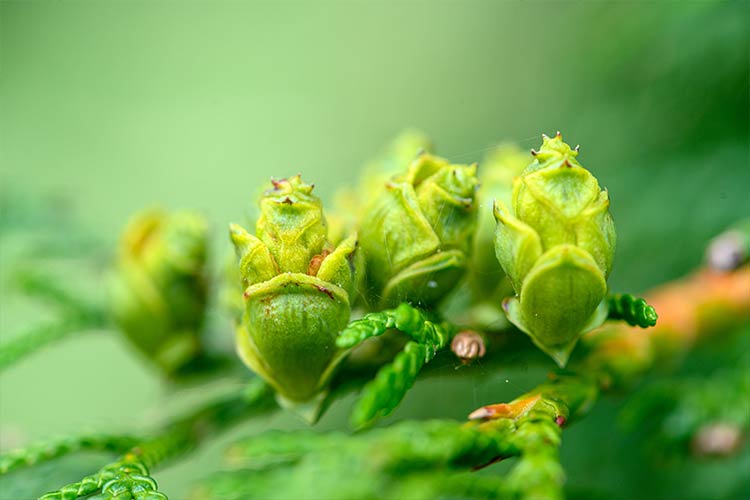
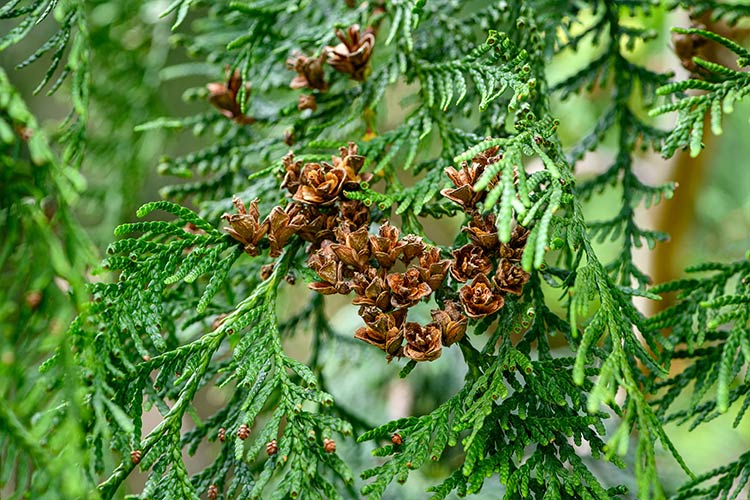
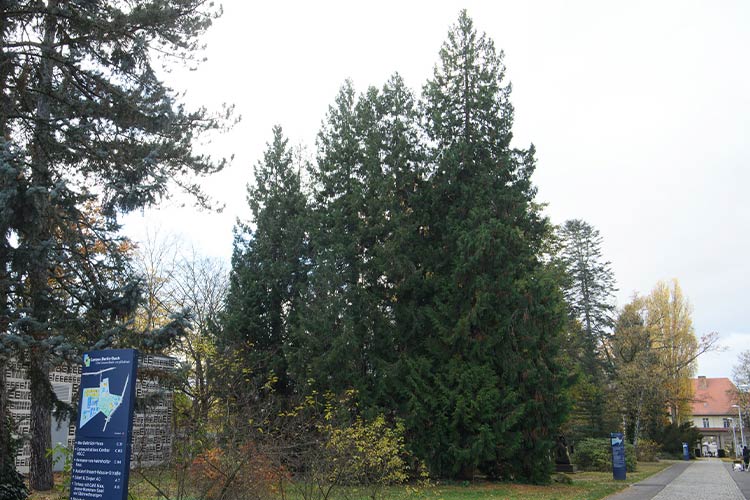
Western red cedars are hardy, but suffer in cases of summer drought, which can cause shoot dieback. The area of origin of the western red cedar is in western North America. It was introduced to Europe in the 16th century, originally planted and has now gone wild. It is grown as an ornamental specimen tree, with limbs to the ground, in parks and larger gardens, and used as a hedge plant. The trees on campus are mainly planted in groups and rows, a result of cemetery planning at the beginning of the 20th century,
The plant is considered one of the oldest medicinal plants used by Native North Americans. They use the branches against colds, infections and skin ailments. In Europe, extracts of the green parts were once used for rheumatism, gout, neuralgia and worm diseases. Today, they are used as an ingredient in immune stimulants for acute and chronic respiratory infections, sometimes as adjunctive therapies to antibiotic treatment, and for bacterial skin infections, including herpes simplex labialis. However, some uses are controversial because of the monoterpene thujone, which can cause convulsions. Ingested orally in sufficient quantities, the toxin can be fatal. When hedge clippings containing thujone are disposed of in pastures, grazing animals are sometimes fatally poisoned. Thujone is also irritating to the skin, so the plants should only be cut with gloves.